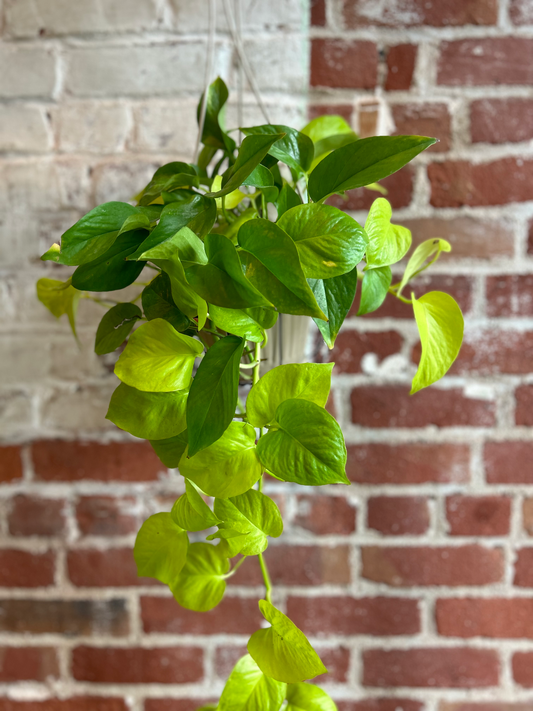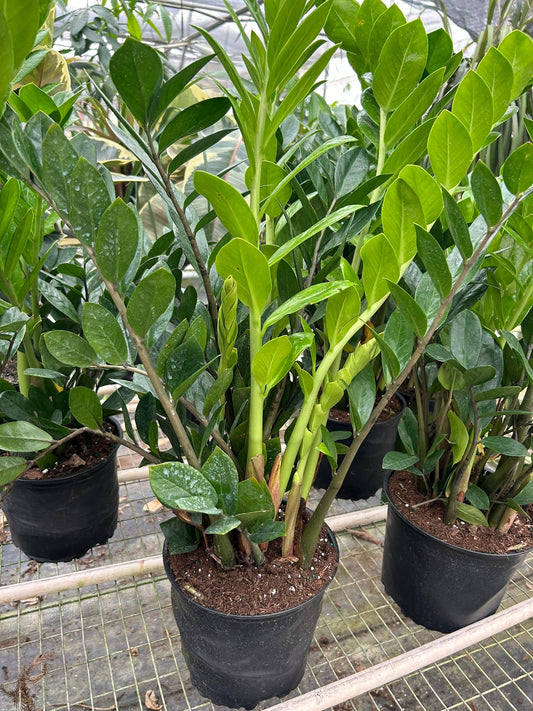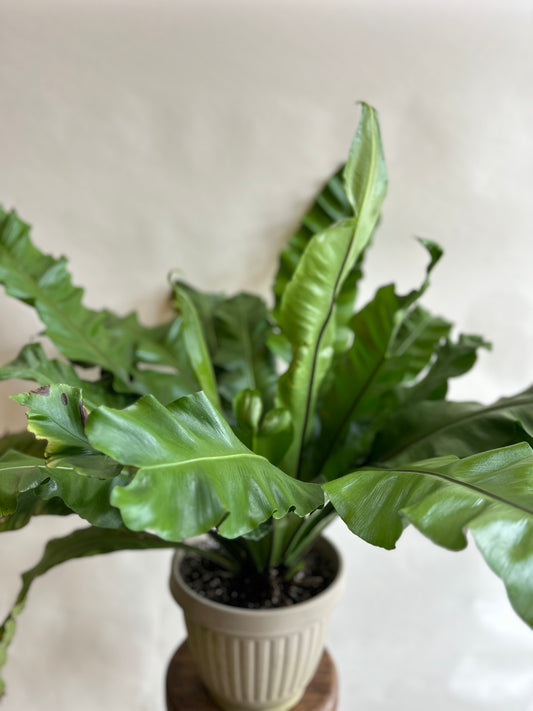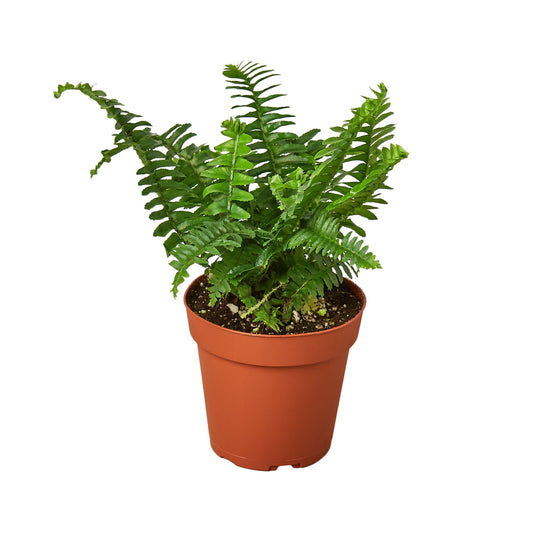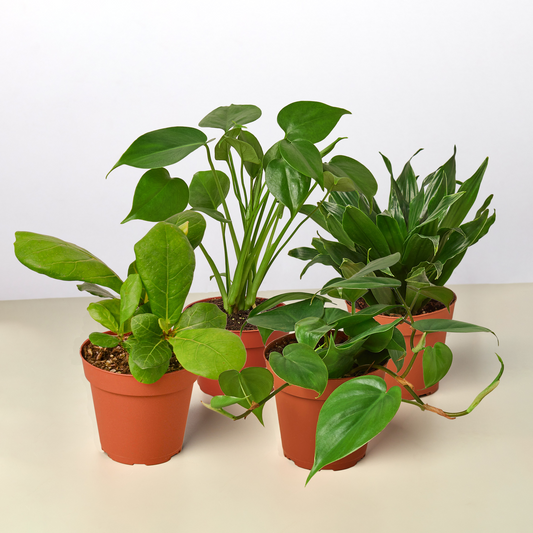What is the Best Soil Type for Peace Lilies?
Cafe Planta Team
Peace Lilies are one of those plants that seem to have it all: they're beautiful, relatively low maintenance, and they thrive indoors. But just like any living thing, they have specific needs, and getting their soil right is crucial. If you've ever wondered why your Peace Lily isn't looking as lush as you'd like, it might be time to give its soil some attention.
In this article, we'll take a closer look at what makes the perfect soil for Peace Lilies. We'll explore the characteristics of ideal soil, why these elements matter, and how you can create the perfect mix at home. We'll also dive into common soil-related issues and how to troubleshoot them, ensuring your Peace Lily stays healthy and happy.
Understanding Peace Lily's Natural Habitat
Before we talk soil, it helps to understand where Peace Lilies come from. These plants originate from the tropical rainforests of Central and South America. Picture this: a lush, shaded forest floor where the soil is moist but never soggy, rich with organic matter, and well-draining. This is the environment where Peace Lilies thrive naturally.
So, what does this mean for us as plant parents? It means that we need to mimic these conditions as closely as possible to keep our Peace Lilies happy. The key here is balance—providing enough moisture without drowning the roots, and ensuring the soil is rich enough to supply nutrients but loose enough to allow air to circulate.
Characteristics of the Ideal Soil
Let's break down what makes the perfect soil for Peace Lilies. It's all about texture, drainage, and nutrients. Think of it like baking a cake—you need the right ingredients in the right proportions for the best results.
- Texture: The soil should be loose and airy. This allows the roots to grow freely and access oxygen.
- Drainage: Good drainage is crucial. Peace Lilies do not like sitting in water, so the soil must allow excess water to escape.
- Nutrients: The soil should be rich in organic matter, providing essential nutrients for growth.
Achieving this balance might sound tricky, but with the right mix, it’s entirely doable. Remember, the goal is to create a soil environment that closely resembles the Peace Lily's natural habitat.
The Elements of a Great Soil Mix
Now that we know what we're aiming for, let's talk about how to get there. A great soil mix for Peace Lilies typically includes a combination of potting soil, peat moss, and perlite or sand. Each component has its role to play:
- Potting Soil: This provides the basic structure and some nutrients. It's the foundation of your soil mix.
- Peat Moss: Peat moss helps retain moisture without becoming waterlogged. It also adds organic matter to the mix.
- Perlite or Sand: These elements improve drainage and keep the soil from compacting. They ensure that water flows through the soil, preventing root rot.
Mix these in roughly equal parts to start. You may need to adjust based on your specific conditions, like the humidity in your home or the size of your plant pot.
DIY Soil Mix for Peace Lilies
Creating your own soil mix can be a rewarding project. Not only do you get to play mad scientist, but you also ensure that your Peace Lily has the best possible environment to thrive. Here’s a simple recipe you can try at home:
- 1 part potting soil
- 1 part peat moss
- 1 part perlite or coarse sand
Mix these ingredients thoroughly in a large container. Make sure to break up any clumps to keep the mix airy. Once you're satisfied with the texture, it's ready to use. This DIY mix is designed to provide the balance of moisture and drainage that Peace Lilies love.
Common Soil Problems and Solutions
Even with the best intentions, sometimes things go awry. If your Peace Lily is looking less than perky, it might be a soil issue. Here are a few common problems and how to solve them:
- Overwatering: If the leaves are turning yellow, you might be overwatering. Make sure your pot has drainage holes and consider adding more perlite to the mix.
- Underwatering: Wilted or drooping leaves can indicate underwatering. Check that the soil isn't drying out completely between waterings.
- Poor Drainage: If water pools on the surface of the soil, it’s too compact. Add perlite or sand to improve drainage.
- Lack of Nutrients: If growth is slow, your soil might need a nutrient boost. Consider using a balanced liquid fertilizer during the growing season.
Remember, plants are living things, and sometimes they need a little troubleshooting to get back on track.
Repotting Your Peace Lily
Repotting is a great opportunity to refresh the soil and give your Peace Lily a new lease on life. Here's how to do it right:
- Choose a Pot: Select a pot that's only slightly larger than the current one. Too much extra space can lead to water retention issues.
- Prepare the Soil: Use your DIY mix or a high-quality commercial mix designed for houseplants.
- Gently Remove the Plant: Carefully take the Peace Lily out of its current pot. Loosen any compacted roots.
- Repot with Care: Place the plant in the new pot and fill around it with fresh soil. Firm the soil gently but don’t pack it too tightly.
- Water Thoroughly: Give your Peace Lily a good drink to help it settle into its new home.
Repotting every couple of years not only refreshes the soil but also gives you the chance to check on root health.
Choosing the Right Pot
While we're on the subject of pots, let's talk about why the right pot matters. It's not just about aesthetics—though a beautiful pot certainly doesn't hurt! The material and size of the pot can affect how well your Peace Lily's soil performs.
- Size: As mentioned earlier, choose a pot that’s just a bit larger than the current one to avoid water retention issues.
- Material: Terracotta pots are a great choice as they allow the soil to "breathe," helping with moisture control. However, they may require more frequent watering.
- Drainage: Ensure the pot has drainage holes. Without them, water can pool at the bottom, leading to root rot.
Think of the pot as part of the plant's ecosystem. It works together with the soil to create the ideal living conditions for your Peace Lily.
When to Adjust the Soil Mix
Sometimes, environmental changes mean you need to tweak your soil mix. Here are a few scenarios where adjustments might be necessary:
- Seasonal Changes: During the winter, you might need to increase the amount of perlite to improve drainage, as Peace Lilies typically require less water.
- Humidity Levels: If you live in a particularly humid climate, consider adding more sand to your mix to help with drainage.
- Growth Spurts: If your plant is growing rapidly, it may deplete soil nutrients faster. Consider enriching the soil with compost or a slow-release fertilizer.
Remember, you can always adjust as you go. Keeping an eye on your plant’s response to its environment will guide you in making the right changes.
Final Thoughts
So, there you have it—a deep dive into the world of soil for Peace Lilies. By understanding their natural habitat and what makes the ideal soil mix, you can create a thriving environment for your plant. From mixing your own soil to troubleshooting common problems, these tips will help ensure your Peace Lily flourishes.
At Cafe Planta, we're passionate about helping plant lovers on their journey. Whether you're looking for new houseplants, plant care accessories, or just some advice, we're here for you. Feel free to email us or reach out on Instagram. Together, let's make your home a beautiful, thriving oasis.


